BIRTH AND INFANCY OF No. 8 SQUADRON, IAF
Preamble
Sqn Ldr T J Thomas joined the fledgling Air Force in 1939 at the bottom rung, and worked his way up to a ‘field’ rank, equivalent to Major in the Army. In the process, he had to climb many steps.He commanded No 43 Signals Unit in J&K from 1960 to 1962. He was also Station Signals Officer at AF Station, Tambaram as a Warrant Officer and, later, as a Flying Officer. The same post is held by a Wg Cdr today. The IAF of 1939-45 was the most modern Asian air force of the time, except for Japan. We were also the first Asian air force to get jet aircraft. Please note that, comparatively speaking, the Vengeance aircraft of the time was more high tech than the Rafale today. It was an era when most parts of India did not even have electricity.
The story which he has written makes interesting reading.
I have known his son, Wg Cdr J Thomas, VM (XIX NDA, E/H Sqn) since 1958. Recently I learnt that the author had seven children. He ensured excellent education for all of them. I am told that, in addition to his own offspring he rendered help to his siblings and his sister’s children. How he managed all that within his meagre income is a mystery. I met him in his house in Kerala in the year 2000. He was nearly 86, but was remarkably fit and full of zest. He remembered the minutest details of his early years, and seemed to know a lot about me. I received abundant affection from him.
Now, over to Thomas.
*
Memories Of 8 Squadron, IAF
by
Sqn Ldr T J Thomas (Retd)
Author in 1959
In the winter of 1980-81, Wg Cdr Joseph Thomas, CO of 106 Squadron took a detachment to Tezpur where his friend, Wg Cdr Manjit Singh Sekhon, was commanding 8 Squadron. 8 Squadron was preparing for its colour presentation and were updating their archival material. When Wg Cdr Thomas mentioned that his father, Sqn Ldr T J Thomas (Retd) had served in 8 squadron from the time of its formation through service in the Burma front and till they moved to Quetta, Manjit Sekhon immediately wanted Sqn Ldr T J Thomas to write about his experiences in 8 Squadron. Sqn Ldr Thomas was then 66 years old and he put pen to paper to record his memoirs from WW2. The result was sent to 8 Squadron who made a typescript and incorporated it in their history folder. The account is now reproduced on this page, courtesy of Wg Cdr Joseph Thomas, who retains the original manuscript. The memoirs offer a rare insight into the life of an airman during those tumultuous times. It offers a view into the difficult circumstances under which the ground crews operated. We concentrate too often on officers memoirs, and in the process miss out on potential contributions from other ranks. This article goes a small way into changing that.
(From Bharat-Rakshak.com)
*
Initial Days
In December 1939 I was recruited from Drigh Road, Karachi. I signed in for the IAFVR (Indian Air Force Volunteer Reserve) on 18 Dec 1939 in front of the CO of No 1 S of AFTT (No 1 School of Air Force Technical Training) at Ambala. I was trained first as a wireless operator and then as a WEM (Wireless and Electrical Mechanic). On passing out I was posted to the Coastal Flight, then at Juhu, Bombay. That was in April 1941. In 1942, on a mutual transfer, I went to the Coastal Flight at Cochin.
Late in 1942 all the Coastal Flights were disbanded and IORs (Indian Other Ranks) — as Indian airmen were then designated — were sent to Drigh Road, Karachi, (the only a/c depot in India then) for preliminary training , so it was said, on the new or “advanced” aircraft with which the additional Indian squadrons under formation were to be equipped with.
But the feelings at that time were such that the RAF did not “want” us IORs to be anywhere near the workspot. In clear but blunt terms we were told that we would only be a hindrance in the hangars. Hurricanes, Spitfires, Hudsons, Wellingtons and even Dakotas were kept out of our reach. Those interested could go to the Assembly Hangars where the American built all-metal
“Vultee Vengeance” dive bomber aircraft were assembled. News somehow trickled through that we would be getting these aircraft in the squadrons we were to form.
One or two of us took advantage of this, managed to get hold of the aircraft publication and took notes and circuit diagrams from it. Being a WEM I took interest in the electrical sytem of the aircraft and very soon felt confident about working on the aircraft electrical system [ He had completed BSc (then BA) in Chemistry before joining the IAFVR. So this self study was not a problem.] Apart from this little work, all of us used to “sleep” in the tents at Drigh Road. About six months thus passed by.
To No.8 Squadron
Then we were dispatched to different places to form Nos 6, 7 and 8 IAF squadrons. No 6 had Hurricanes. As a “recce” squadron it did valuable service to earn the name of “the eyes” of the 14th Army on the Burma Front. Nos 7 and 8 were Vultee Vengeance squadrons. Personnel of the Cochin Coastal Flight were the nucleus of No 8 Sqdn. No 8 was formed at Kajamalai, about 3 miles or so from the Trichinopoly Junction railway station. P/O Sethuraman was our Adjutant. I cannot remember who the CO was. (Did we have one ? ) I don’t remember to have met or even seen such a person ! We were only very few airmen there, mostly from Cochin Coastal Flight. “Bearer” boys from Cochin joined us on their own and worked for us. Cooks and waiters in the mess at Cochin also were at the new place. We had a very happy stay, but — alas ! – a very short one. We had good food, good climate and nothing at all to do ! I got permission to live out with my family. Exactly two days after living out I was called and told to send the family home, for the unit was moving ! But we stayed on for another two weeks till the unit moved because my wife agreed to travel back home alone .
Vultee Vengeance A-35B in flight. This is a target tug conversion with all armament removed.
The unit moved by train (in a special bogie for us) to PHAPHAMAU in Allahabad where we had a concrete runway right in the midst of wet paddy land. Here too our stay was short. My memory is that the whole period was rainy and there was hardly any flying. One thing that stands out in memory is that in those days as a CPL I did Orderly Sgt duty every alternate day. LAC or senior ACs were guard commanders ! We were so short of NCOs then. Muddy canals, huge shady mango trees, lush paddy/wheat fields and ice cold water drawn by bullocks from very deep wells still linger in my memory.
From Phaphamau we moved to CHARRA, near Purulia and Ranchi. Here, there was an undulating long concrete runway (we heard it was a USAAF bomber base) and some sort of comfortable accommodation. Major (Sqn Ldr) Niranjan Prasad was the CO. (He later went back to Army and became Maj Gen. ) Flt Lt HC Dewan (later Air Marshal) and Flt Lt Chopra were Flt Commanders and Plt Offr Pritam Singh the Technical Officer. For battery charging we depended on Asansol, the nearest city.
Major Prasad was a strict disciplinarian. One day he herded all the NCOs into his small room and then gave his orders. “If you don’t put men on charge and bring them to me, I will break you NCOs. Come on, march out.” Of course, he did not get much joy .
At Charra there was a dearth of Electrician tradesmen, especially those with any knowledge of the electrical system on the Vengeance aircraft. Fg Offr SJ Dastur (later Air Marshal) was then O i/c Signals and so was my section officer. On being requested, he deputed me to work in the Flights as an electrician. This aircraft had some electrical gadgets which were all new to the airmen then — items like an engine driven generator, electrical fuel pumps, swiveling landing lights etc. To add to the troubles of electricians, the battery on the aircraft was a low capacity one. My labours during the “sleeping” period in Karachi proved useful to the squadron. The paddy fields around the camp and the tasty “rasa-gullas” which the villagers sold to us stand out in memory.
Move to the Front
Life in Charrah was short too. One night, while we were all in the dining hall, the CO came there in his jeep, frantically searching for Cpl Thomas. Soon I was standing in front of him with my plate and mug in one hand. Without any formalities, he began “Thomas, how much time you want to pack up your section ?” Before I could answer, he continued, “Well, the squadron is moving for operations. The train is now standing on the platform and is to leave by 6 AM tomorrow. Before that I want all equipment to be packed properly and loaded into the train. All airmen must also be in the train with their personal luggage.” And he pressed the accelerator and vanished into the darkness.
There were exactly 10 hours at our disposal to complete all action. Every one in the section did their bit and, before 6 AM, the men and equipment were in the train. So did others too and the train was flagged off at 6:30 AM. We had a blacksmith tradesman AC Mathews in the service (not in the squadron) and we met him on the platform as a Sgt with green and red flags. We were together in Ambala in 1939. He told me he was a Security Sgt and he did the last waving off of the train.
The question on everybody’s lips was, “Where are we going ?” We all guessed, going for operations must be to the Eastern Front, and the railway stations we left behind confirmed that we were moving towards East. We reached Calcutta. Then came orders to board a ship waiting in the harbour. We were proceeding to Chittagong. Huge cranes “threw” our equipment crates from great heights into the holds of the ship. We knew we would be left with nothing serviceable or usable when we reached our destination .
The ship moved in a convoy and on the fourth day we coasted at the Chittagong harbour. We trooped out of the ship and were whisked away in waiting trucks to some barracks. We came to know later that the place was called “Double Moorings.” Surely the villages had their own names, but to us the whole area was Double Moorings.
We had some breakfast on the ship. It was 1400 hrs and no lunch. We searched for the mess or the cookhouse. We found them but they were closed tight. Cooks, waiters and even rations were still in the ship or at the harbour ! Still worse, there was no drinking water !! The place was completely strange; surroundings were all alien; no shops of any kind anywhere nearby ! Loading / unloading operations and the humid climate made us very exhausted too .
Map of Double Moorings, Chittagong (now Chattogram). Double Moorings is now a taluk in Chattogram District and is the inner portion in the map above.
We lived in bamboo barracks. Walls, supporting pillars, beds (charpoys) were all either bamboo or bamboo products. Dry, long jungle grass formed the thatching. The “mosaic” on the floor was bamboo mats ! MT Section brought us drinking water from “somewhere.” We used to keep in barracks our water bottles or other tins filled with drinking water. Bathing, washing (we had no dhobis) etc were in rivers, brooks or in ponds — moss-filled, most unattractive ponds. But such ponds were the only source of water.
Local people used this pond water for all their domestic purposes. To quench our thirst we were sometimes forced to buy tea made out of this water from hawkers.
Chittagong Harbour Today
The flying strip — for there was no regular airfield there – was, I think, about a mile from our barracks. We used to trot the distance to and fro. Headquarters was close to the domestic area.
Chittagong Airfield in 1944
Aircraft had to fly but a good lot of ground equipment was damaged or even broken after the rough handling they got at the two harbours. Batteries and communication equipment were totally unserviceable. Aircraft needed ground batteries for starting up; batteries needed repair and charging; and there were no charging facilities ! We were in a terrible predicament ! The only way out was to service and commission small petrol electric sets we had and use them for charging. But the difficulty was it could charge only one 24 volt battery at a time. But then, who would service these sets ? Who would service the petrol engine portion ? We had a metal worker, 995 AC SIMHALAN (who left the service at the earliest opportunity) who then had no work to do in his own trade and, on account of the friendship we established while in the Cochin Coastal Flight, he came to see me. I knew he was a very good motor mechanic and I, on my own, enlisted his services to service the petrol sets. He proved to be of immense help. Side by side, batteries were prepared for charging and they soon went on charge. A great relief indeed.
At Double Moorings, I found myself burdened with servicing all these petrol electric sets and getting the batteries in running condition. Flight work on aircraft was attended to by others. We were a bit fortunate to have one special charging set, called the “V” engine, with us and this could take more batteries at a time.
Chittagong now has a large airfield jointly used by BAF and civil aviation
However, by the time conditions settled down and we were gaining confidence about satisfactorily carrying out our daily work, it was time to move out of the place. My memory is that the next place was CHIRINGA. But we stayed there only for a week. It had a concrete runway and bamboo barracks. I cannot recollect any flying there, nor about any mess affairs. But the joke in the squadron was “wrong mistake.” Our next halt was at MAMBUR. Here we stayed on for some months. We had a river nearby for bathing and washing. Villagers improvised tea shops. Tube wells provided potable water. It was at Mambur that I was promoted as a Sergeant and made SNCO i/c Signals of a flight. A lot of flying into enemy occupied territory — mainly the Arakan coast — was conducted from here. We lost one aircraft with its two crew — both Indians – believed killed in action.
Pilots and ground crew along with the British CO of No.8 Squadron.
We used to get our Canteen supplies from Cox’s Bazaar, a small town nearby, then a fairly big Army base. Flg Offr Dastur was O i/c Welfare and he took me as his SNCO i/c Welfare. My main duty was to effect sales of the Canteen items twice a week in the night and entrust the sale proceeds and accounts to him. I used to wash my uniforms in the river and get them pressed by sleeping over them. We used to get some good American boot polish in the Canteen and so my shoes used to shine like a mirror (no exaggerations!). Thus I used to be better dressed than many others in those operational days.
Once the aircraft took off for operations, men were free to do anything. Some (like me) took to reading, others to cards and still others to chit-chatting. I read the maximum number of detective novels in those days. We used to get our mail regularly.
A pair of Vultee Vengeance in flight (Representative image)
The Vultee A-31 Vengeance was an American dive-bomber aircraft, which went into service in 1939 but not with USAAF. This aircraft served with Royal Air Force, Royal Australian Air Force, Indian Air Force and many other countries in the world. No. 7 and No. 8 Squadrons of Indian Air Force were equipped with these aircraft. These aircraft were extensively used against Japanese supply depots, communication centers and troops concentration during the Burma Campaign.
General Characteristics –
(a) Crew—Two (one pilot and one gunner/observer)
(b) Max Speed—420 km/hr
(c) Range—3700 km
(d) Service Ceiling—22,300 feet
Armament –
(a) Guns—four fixed forward firing .303 inch machine guns in the wing and two flexible mount .303 inch machine guns in rear cockp
(b) Bombs—two internal 500 lb bombs and two 250 lb bombs on wing racks.
The atmosphere in the Squadron was not all that good. There was intense anti-British feeling. The period was 1943-44. The turmoil in Indian politics kept this hatred alive. By this time a New Zealander (name I don’t remember) took over the command of the squadron and we had as Adjutant a Bengali Flg Offr. They were at loggerheads, we knew. Though no love was lost between the RAF and IAF elements, when it came to a question of keeping the aircraft flying, both elements put in their best.
The tension was eased by the onset of the monsoon of 1944. Everybody knew it was time for withdrawal. We could no longer stay on in the wet paddy fields of East Bengal (now Bangla Desh). Since it was more than a year that I was separated from my family I had applied for leave on several occasions. Sometimes it was even approved. I had my leave approval when the rains began. Soon, orders for our withdrawal to a peace station were out and my leave was again cancelled for the eighth time in succession ! – and that too by a margin of two or three hours. Once again I lost an eagerly awaited opportunity to see my aged parents, or my wife or my son (today a Wg Cdr in the Air Force).
I wish to record three incidents that stand out in my memory about Mambur. The first one is an air raid alarm when we were all writing our education test. The invigilator was the Squadron Education Officer who was an Indian citizen who escaped the Japanese air attacks in Burma. At the sound of the alarm he was the first to run away from the examination hall into the jungles for he had tasted bombing in Burma. We came out and began scanning the sky, very eager to see a dog fight or an enemy plane. Foolish, isn’t it ? But that’s what we did. And there were clever guys too ! This was a fine opportunity for them to compare notes and make up for what they didn’t know ! From the Liaison Officer we learned the next day that the aircraft we saw swinging and swerving over us were three Japanese Zeroes — identical in appearance to RAF Spitfires — who, by mistake, got mixed up with a squadron of Spitfires returning to base after operations. The Japs were trying to escape. One was shot down, one possibly ditched in the sea and the third escaped.
Mambur is today a large airfield jointly operated by the Air Force and civil aviation
The second incident also took place during working hours. Aircraft had returned from operations and all the ground crew were busy doing inspections etc when suddenly there were a series of explosions nearby. Some thought it was some high level bombing (because no hostile aircraft were visible) and ran towards the domestic area. Some others, looking in the direction from where the sound came, saw huge columns of dark, thick smoke with huge tongues of flame. Adjacent to, and almost touching the runway, was a village with many huts and right in the heart of them all was a storage dump for aviation fuel. The fuel barrels were exploding in quick succession. [Later we came to know that one of the lascars, after lighting a beedi, showed the match to a thin, needle-like leak of petrol !!] Shouting “Fire ! Fire !” we ran towards the village. The huts were all bamboo constructions; the heat of the day and a mild breeze fanned the flames. The whole village was in a panic. All of us did what we could to arrest the flame from spreading and engulfing the huts. Fire engines appeared. Local magistrate and other govt officials also came. When finally the flames were extinguished (when the fuel dump was completely burnt) only one hut was burnt down. We saw a heap of paddy inside almost the size of the hut itself. The woman of the house was wailing and was pressing to jump inside the burning hut. She had to be held back by strong men. When the fire was under control she dashed into the smouldering ruins and began digging out small coins — all made of silver — from amidst the paddy heap, the top layer of which was all roasted now. The change added up to nearly Rs 1,000/= ! (A small fortune in those days — 3 months salary of a Pilot Officer ). And it was a time of acute shortage of paddy/rice and small coins. The magistrate, who was a witness to all this, wanted to proceed against the woman for hoarding ! But the squadron authorities prevailed upon him to let it go in view of the loss she suffered in the burning of her hut.
The third was an aircraft accident that occurred when the whole squadron was watching it with a silent prayer for the safety of the crew. We had just begun to relax when we saw at a distance one of our own aircraft returning from the mission for which it had left. Vultee Vengeance aircraft had a bomb bay and unless the bay doors were opened, the bombs could not be dropped. After take off the pilot noticed that his hydraulics had failed. So he could not lower his undercarriage for a landing; he could not open the bomb doors to jettison the 500 lbs bombs he was carrying; with live bombs in his belly he could not do a belly landing. The fuel tanks were near full too. He reported his predicament by radio. He began circling round the airfield. All eyes were upon him. Ground radio gave him instructions to climb to a safe height, bank the aircraft and allow the air gunner in the rear seat to bale out. We were anxious and at the same time excited to see a baling out. The operation was successful. In the bright sun the golden parachute opened magnificently and the officer was descending well. The pilot was then asked to head straight to the sea, set the aircraft’s course to the sea and himself to bale out over land. This also was watched with interest and when his chute also opened, everyone heaved a sigh of relief. But, to our horror, we saw the aircraft suddenly going in a circle around the pilot descending with his parachute. The aircraft circled three or four times and then suddenly stalled and crashed ! The pilot was safe and still descending ! We waited to hear the explosions of the bomb but nothing happened. (They had to be fused before dropping). Within minutes the Military Police reached the camp with “two Parachutists who had landed in our territory” and the unit CO was only too pleased to identify and receive them as “our crew.”
BAF Mambur Air Base, Cox’s Bazar
The Tour of duty ends
I said earlier that orders for our withdrawal were out. Our nearest railhead was at Dohazari. The arrangement was that we travel in the night by boats to reach the railhead. Accordingly we carried our personal luggage to the boat jetty. We left by a boat. We were told “the luggage would follow.” Next day we landed at some place (who knows the name ?) and were carried by trucks to a transit camp. There we got some type of food. We were more anxious about our luggage. Finally it came. Water was dripping from every bundle. It was carried on the deck of some boats and it was raining heavily throughout the night ! Somehow we dried them, repacked and were ready to move. And early next morning — my birthday in 1944 — even when it was dark, with the luggage carried on our heads we marched to the railway station. By dawn we were on the platform.
We knew the journey would take many days; so ten of us occupied one room of a bogie in the train which had separate bogies for Indian and British complements of the squadron. For the next ten days we were in the train. ‘Dog’ biscuits, jam and tea were supplied from the train; otherwise the “bloody” Indians had to fend for themselves. Britishers, of course, received all their meals from the train. So we bought and ate whatever food articles we could get on the way. Here again we had a problem. Being a military special, the train would give way to other important mail/express trains and would stop only at small stations, very often outside meal timings ! A direct consequence of consuming this type of food and water was that when we alighted at Quetta, now in Pakistan, on the tenth day of our journey in the train, there was not a single Indian airman whose tummy was not upset. Every one had contracted diarrhoea. In transit, one of our aircraft hit the hill close to the Sumangli airfield (Quetta) and crashed killing both the (British) crew.
In the prevailing atmosphere at Mambur I had sought a posting as an instructor in a training institution, partly because I liked instructional work and partly as a way of getting out of the tense feelings in the squadron. When the Orderly Room started functioning at Quetta I got my clearance to proceed to the Signals Training School at Andheri, Bombay and I bid farewell to No 8 Squadron
Epilogue
Early in August 1944 I joined the training school at Andheri. The school was just about to be shifted to Hakimpet to be merged with the school established there. On reporting to Andheri I explained that I was coming from the operational area and that I had no leave for a long time. I was granted leave immediately. On return from leave, the school moved to Hakimpet.
This training unit moved in March 1947 to Tambaram. All technical trade training was concentrated in this one unit. I got my promotion as Flight Sergeant and worked in the School Trade Test Board. I still remember very vividly the midnight of Aug 14, 1947, when we all sat around the radio in the SNCO’s Mess and listened to the famous speech of Nehru – “the tryst with destiny.” In 1949 No 3 GTS was formed at Jalahalli for all Signals training. I was then posted to CTTB at Kanpur. Within six months on promotion as Warrant Officer I went back to Tambaram. As a W.O. I was in independent charge of the Signals Section at Tambaram.
I remained there till 1954 when, based on the results of written examinations and the tests at the Selection Board, Dehra Dun, I was selected for commissioning. Accordingly I underwent the Officers Training Course at AFTC, Jalahalli, and stood first in the course. I was commissioned in Feb 1956, with two years ante date.
As a Plt Offr I got a supernumerary posting to Tambaram; but within a year was moved to No 3 GTS. Air HQ was pleased to move me again to Tambaram after spending exactly one year at 3 GTS. Here I became a Flt Lt.
In 1960 I was posted to a Signals Unit in Jammu and being the only officer in the unit was the CO of the unit. I got my “last posting before retirement” in 1962 and it was again to Tambaram upon request. As a Flt Lt I sat on the same chair which eight years earlier I left as a W.O. But the Chinese war of 1962 upset so many plans. I was promoted and posted to No 6 GTS Jalahalli — a newly formed training unit for Radar trades. On reaching superannuation, I retired from No 6 GTS in 1966.
Air HQ kindly gave me three years of re-employment of which the first year was at 6 GTS and the last two years at No 3 GTS. Since both units were on the same station, I was in Jalahalli from 1963 to 1969. In July I bid farewell to active service in the Air Force which was my home from Dec 1939 — a period of almost 30 years.Looking back in reminiscence, I am happy to say that I have no regrets and no axe to grind. I loved and enjoyed my work. And in all humility and thankfulness Imust acknowledge that wherever I was in whatever rank, I received respect, love and consideration from all those around me.
XIX Course Passing Out December 1960
More from the internet
The first CO of 8 Squadron was Squadron Leader Niranjan Prasad, 1586 GD(P)
Bases Trichinopoly, Phaphamau, Charrah & Double Moorings.
He was transferred from the Army. In 1944, on becoming medically unfit for flying, he was transferred back to the Army. He retired as a Major General.
Rare footage from the Australian War Museum collection shows Vultee Vengeances of No.8 Squadron Indian Air Force from around March 1944.
The aircraft are serviced before taking off for operations in dusty conditions at Joari and Mamur (Mamura) airfields, India.
https://www.youtube.com/watch?v=b8RqlK1d1_k
The Royal Indian Air Force, 1932 – 1947
https://www.rafmuseum.org.uk/blog/royal-indian-air-force/
From Wapitis to Vampires: Indian Air Force aircraft and the politics of decolonisation 1933-1950
https://blog.history.ac.uk/2017/02/from-wapitis-to-vampires-indian-air-force-aircraft-and-the-politics-of-decolonisation-1933-1950/
Telling lost stories of Indian aviators
https://www.tribuneindia.com/news/reviews/story/telling-lost-stories-of-indian-aviators-55588
No. 8 Squadron (IAF): Second World War
http://www.historyofwar.org/air/units/IAF/8_wwII.html
Vultee A-31 Vengeance in action
https://www.youtube.com/watch?v=B__6xHwSJQ8
Vultee Vengeance
https://www.youtube.com/watch?v=k4ohwlL_QhI
BAF Base, Cox’s Bazar, Today
https://www.google.co.in/maps/place/Bangladesh+Air+Force+Base+Cox’s+Bazar/@21.4455484,91.9611186,3a,75y,90t/data=!3m8!1e5!3m6!1sAF1QipPb93-RupQSBIo0ejTZ9pylbuL2v32wuVydoWD7!2e10!3e10!6shttps:%2F%2Flh5.googleusercontent.com%2Fp%2FAF1QipPb93-RupQSBIo0ejTZ9pylbuL2v32wuVydoWD7%3Dw203-h114-k-no!7i1920!8i1080!4m8!1m2!2m1!1sAirports+near+Cox’s+Bazar!3m4!1s0x0:0x5795c96d3b47e8a1!8m2!3d21.4455493!4d91.9611132?hl=en

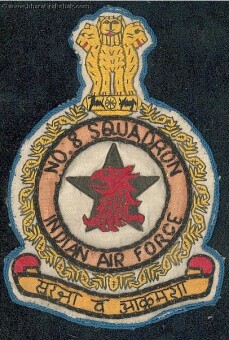



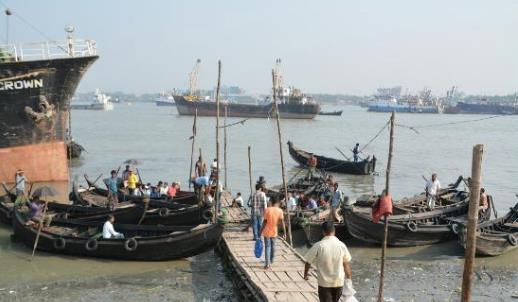
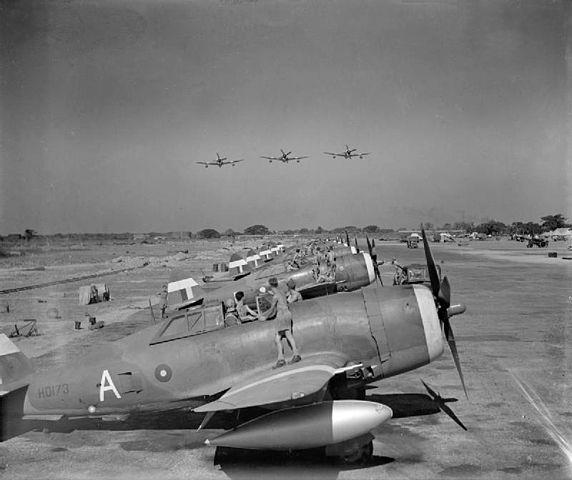
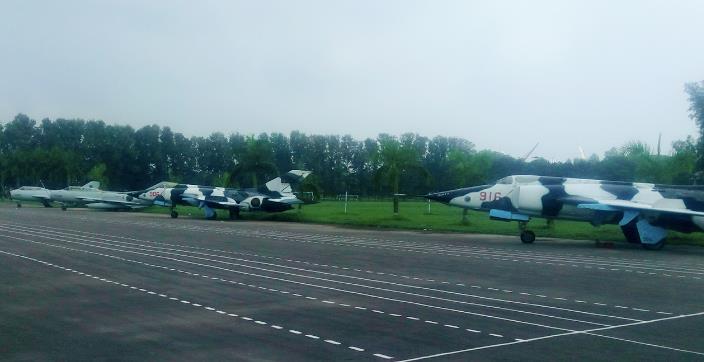
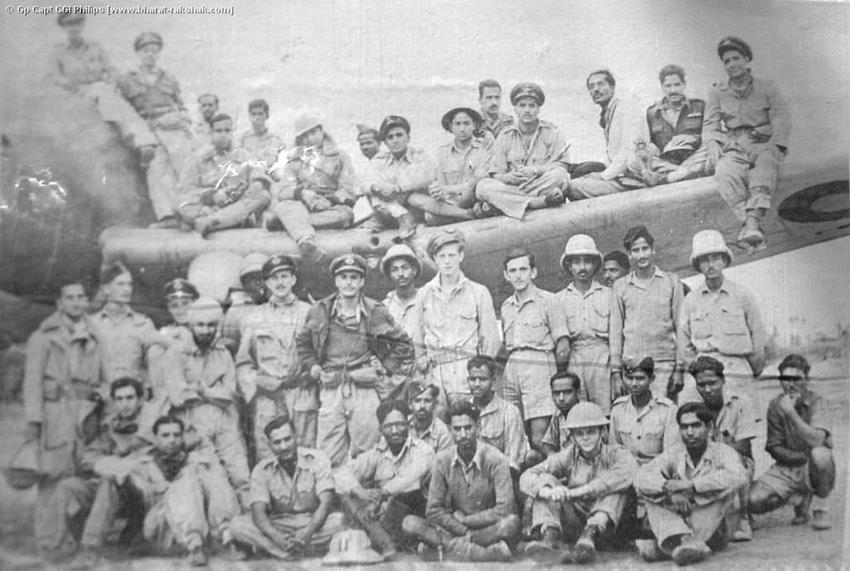
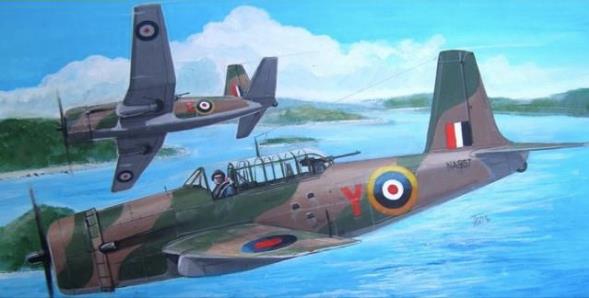
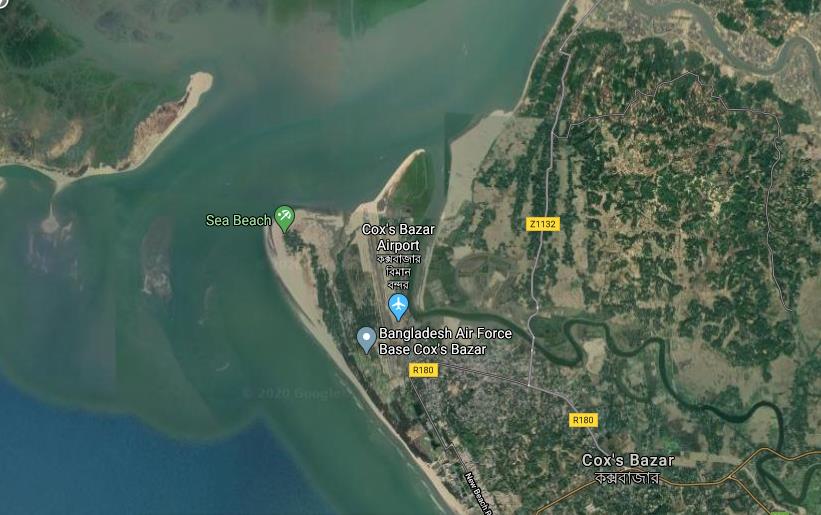
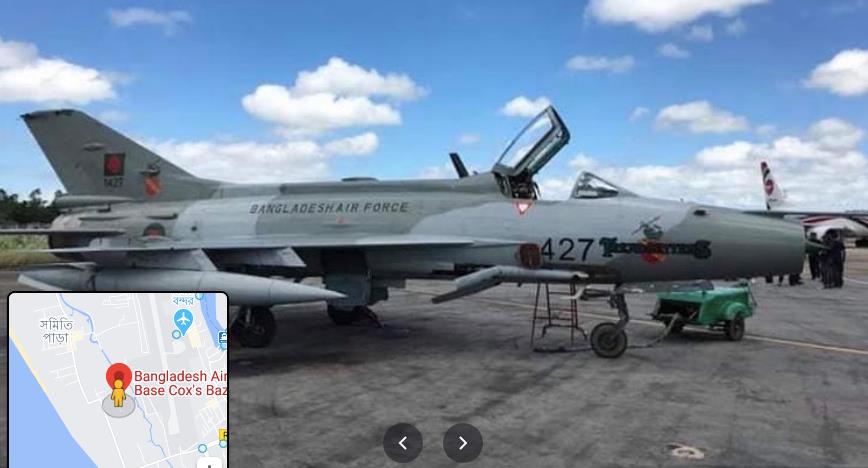







Dear, sir
I’m extremely happy to see this article. As I think I knew one of your squadron mate LAC Sunder Lal Patel from Narsinghpur M.P. He was my grandfather’s elder brother and he too served during WW2. Unfortunately, he left the world in the 1950 and with his limited belongings and very little information made available by my grandfather as he was very young to remember anything back then. With my research,I’m able to say that he served with the IAF and was in the No.8 Squadron. Please contact me if possible as I wanted to know more about my grandfather’s elder brother. Link of my blog on him is given below.
https://mysnipersworld.wordpress.com/2020/11/02/a-tribute-to-shri-sunder-lal-patel/
My email address ameyapatel226@gmail.com
Thanks!… this was a nice read.
The photos from 1999 were a trip down memory lane.
Thanks.
Kamal
Thomas,
You have made no mention of how the families coped with the long years os separation. And remember, your mother had the major share of responsibility in bringing you up, along with your six siblings!
Maybe, you will tell her story, separately.
Surinder
Thanks Surinder. This particular note was written specifically for 8 squadron and is limited to my father’s memories of 8 squadron, albeit with a short epilogue.
My father has written his memoirs separately. When internet became available, we posted it on a website. I will send you the link.
My home state has been in the forefront of gender equality. We take it for granted.
I love well recorded history. Makes an interesting read and the conditions under the British Raj.
I am sure Joe is proud of his heritage and his continuity with the Air Force.
I am astonished by Joe’s Father memory and the details he has been able to make the history so interesting.
Thomas,
I think that somewhere in this article, you should have mentioned the dates (or years) of birth and demise of your father. It is customary to do so, for the reader to put the events in the time perspective
Surjit
Joseph Thomas
12:06 PM (14 minutes ago)
to me
Actually, we did not initially give it to Bharat Rakshak for publication.
After 8 squadron put a copy in their records, I typed it out and put it on our family website.
Jagan Pillarisetti found it in one of his internet searches and gave a link in Bharat Rakshak. When I came to know, I gave him a direct copy.
The article has already attracted attention in AF circles. 8 is a well known squadron with a continuous history of 78 years.
3007
Ashwani Bhardwaj
12:04 PM (15 minutes ago)
to me
Respected General Sir,
It was such a pleasure reading the story, it’s from the heart and I am amazed at the motivation levels of that generation.
Thanks for sharing and we do look forward to more.
Warm Regards
Ashwani
Raj Mehta
10:27 AM (1 hour ago)
to me
Very interesting. Thanks for sharing.
warm regards.
Raj
Harbhajan Singh
8:43 AM (3 hours ago)
to me
Thank you very much Surjit Ji. Very interesting reading indeed.
May God bless you.
Warm regards.
Harbhajan Singh
zal kabraji
7:13 AM (5 hours ago)
to me
My Dear General,
Thank you for sharing this very interesting piece of info about 8 Squadron of the IAF.
It brought back some nice memories of my younger days, as some of the officers mentioned in this article—I had the good opertunity to meet !
1. Air Marshal H.C.Dewan when he was doing AOCinC Central Command—-my father’s OC 2TAC in the Division, Gp.Capt. Honey Roy,Vrc. hosted a cocktail party for him & his Russian wife—quite a giant couple,highly respected by all in the IAF !
2.Air Marshal S.J.Dastur—-Sarosh & Slloo—met them 1st. time when Dusty as he was fondly known got posted as Commander Srinagar Air Base, in the 1950s—then again he came to the Staff College as CI Air–in Wellington—-again a most loved figure in our IAF.
3. Maj. Gen.Niranjan Prasad of 1962 fame & his brother Maj.Gen. Kamta Prasad, who I played golf with when he was doing Comndt. Infantry School, Mhow, in the 1960s.
Keep these old stories alive–its the one & only way we can remember some great personalities of our Services, whom some of us had the golden oppertunity to meet up with !
Fond regards & stay safe,
Zal.
Joseph Thomas
Sun, Nov 22, 10:04 PM (14 hours ago)
to me
Thanks Surjit. Bharat Rakshak does not have any copyright on the article, so you don’t need their OK.
3007
Cd Ashok
Nov 22, 2020, 9:52 PM (14 hours ago)
to Maj, J, me
Excellent recall of events, Sir!
I have had 2 innings in 8 Sqn and served under Wg Cdrs AT Thakur & Nanda Cariappa at Pune, and Wg Cdrs R Hardas & Manjit Sekhon at Tezpur.
Regards,
Ashok Chhibbar
Joseph Thomas
Sun, Nov 22, 10:01 PM (14 hours ago)
to Cd, me, Maj
Thanks Ashok. Wg Cdr AT Thakur was a DS in Staff College when I did the course. Manjit Sekhon is just the next course to mine and was the person who requested this account. I have now added photos and maps.
I was a young baby in Trichy when the squadron was formed. My first air force station !
Hope you and family are doing fine in Corona Times.
J T
Samay Ram
Sun, Nov 22, 9:31 PM (14 hours ago)
to me
Thanks. Surjit
In the last picture, you see Thomas standing with the silver medal that he had won on 10th December 1960. In a couple of weeks from now, we shall be celebrating the Diamond Jubilee of that event!
God bless the soul of the great father who brought up his children so well.
Surjit